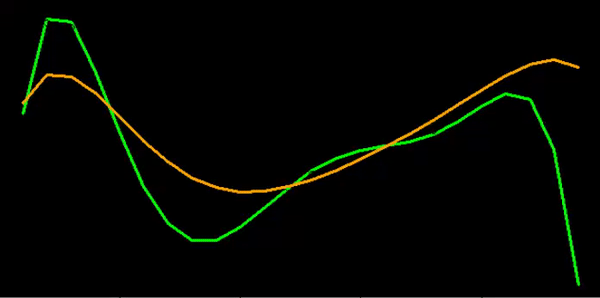Time-series modelling
“Does one trend of sales predict another and if so, which way around and by how much?”
This was the problem posed by one of our clients.
No matter what type of data project you work on, there are some fundamental steps:
Firstly, understanding the data available e.g. missing values, low volumes and outliers
We addressed missing values like so:
Trend with missing data points:
Trend with missing points addressed:
We also wanted to remove the major spikes, as we’re more interested in the overall trend. Normalisation helps with this:
For this project, we used 2 years of data to compare trends (from a total of 5+ years)
We created artificial “lags” between the trends so that we could compare different time frames
We used polynomial models, which created smoother output trends for comparison
Polynomial trend for vehicle sales:
Polynomial trend for property sales
And we used linear regression models to understand the overall trends e.g. what is the overall direction, going up, down or remaining constant?
There are many methods for assessing time-series trends.
We are looked at the “dissimilarity measure” i.e. how similar/dissimilar are the trends?
Some similarities but not the same:
Very similar trends:
Do they increase and decrease at the same time?
Once we found our methodology, we then set about creating an automated procedure to process the tens of thousands of cases.
We could then derive the best look-a-like models with confidence indicators for further analysis.
From here, we then had the job of understanding what the different trends meant in real life terms.
Heat maps are great for finding interesting clusters of similar patterns.
The models can now be used to make predictions to test in real life.
To learn more about this project and others like it, start up a conversation with us.














